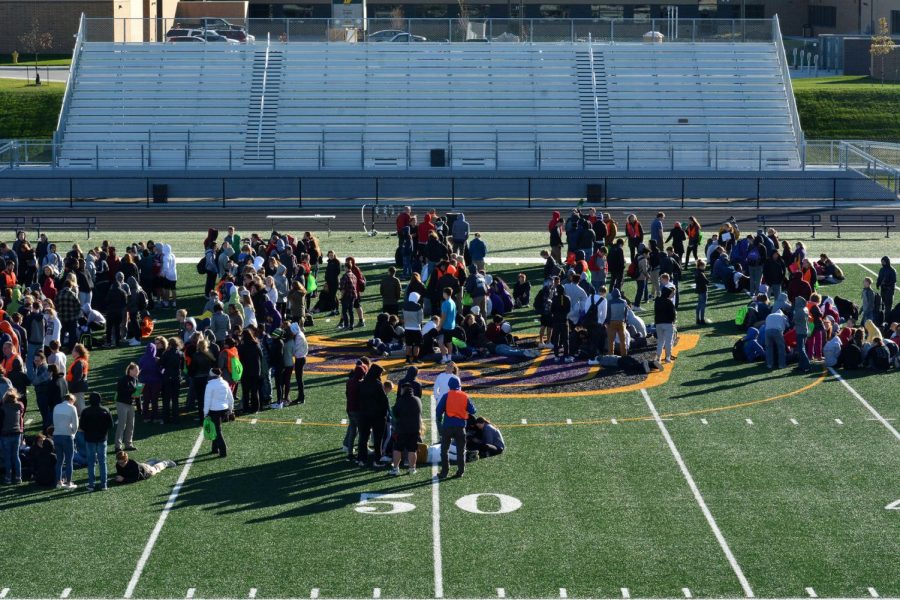Emergency drills considered to be a success
Students huddle during the fire drill. The drill was conducted during 40 degree weather with 25 miles-per-hour winds.
November 1, 2017
After being postponed due to extreme weather, a school-wide fire drill was held Oct. 30 during third period. While the weather was cold and the wind’s bite was sharp, the administrative team seem to consider this drill a success, though some future concerns have been highlighted.
Students were able to promptly exit the building. The upstairs was cleared in a matter of two minutes and thirty seconds. However, the return to class wasn’t as quick as it could have been. “We were very pleased with how fast people got out,” associate principal Jerry Stratton said. “But we noticed some bottlenecks when people would return through the gates.”
Inefficiencies in the current system were also commented on by Stratton. “Our concern is that you as a student have to memorize eight reunification points, and we are wondering how we can narrow it down to one,” Stratton said. “One of our ideas is that we do it by Advisory.”
One of Stratton’s main concern in the following months and the special education students’ ability to withstand the cold. Due to many of the special education students requiring sensitive and controlled room conditions, they are not able to tolerate the cold for nearly as long as the able-bodied students. Stratton has considered having the special education students meet in the football house.
One of the solutions that Stratton presents for the health of the students in extreme weather is to just stay inside if possible. The fire department is aware of where are the special ed students could be. The fire department communicates with the special ed teachers and administrators to determine whether it is necessary to leave based on where the alarm is going off from. Other than that, if any special education teachers or students smell or see smoke, they must leave.
The less than desirable weather was overall beneficial and added to the value of the drill. Everything from whether students should stand or sit to how long students should wait outside before evacuating the premises and relocating completely is considered during and after these drills. “Anytime we run a drill like that, even though its bad weather, we learn a lot of things,” Stratton said.
Several evacuation areas at the old building were not safe for students. The greatest example of this is the west side of the building by the old tennis courts. Students were only separated by two lanes of traffic. If the fire was intense enough, the amount of heat could have caused serious damage to the students, even from that distance. When passing firetrucks are added to the equation, the entire area becomes unsafe. The west side of the building was not the only example of a situation like this. Stratton continues to work with middle school principal Brent Riessen.
The new school is believed to be overall safer in the event of a fire. The school is also quicker to exit. “Having a staircase in each section of the building really pushes kids out,” Stratton said.
The administrative team was also pleased with the results of the tornado drill conducted the following day.
The tornado drill was used as a diagnostic test since EMC Insurance determines the safety of students during tornadoes, but the maximum load of the facilities has yet to be truly determined. Stratton is also using these drills as an opportunity to fix any issues that were present during the drill, such as a busted door.
Stratton encourages feedback from both teachers and students.






